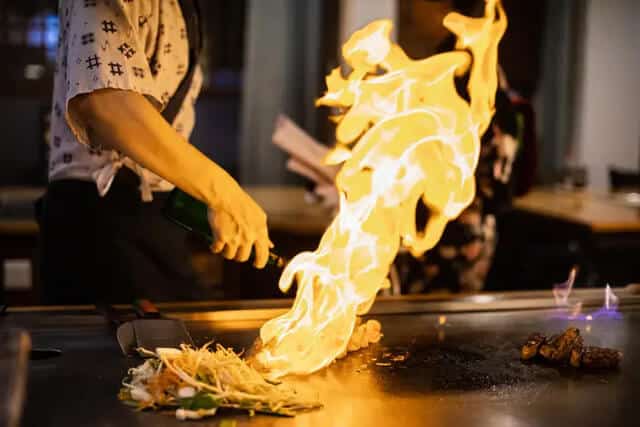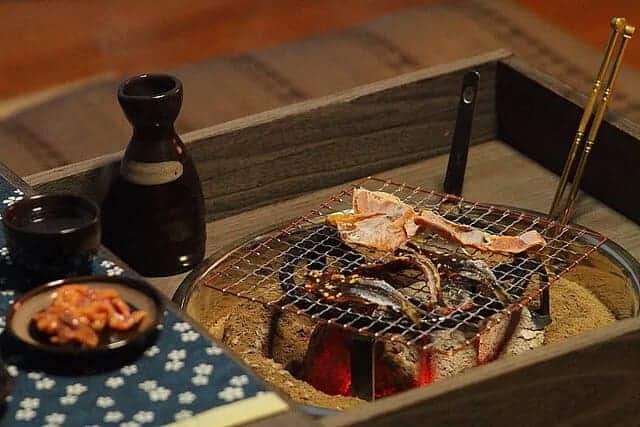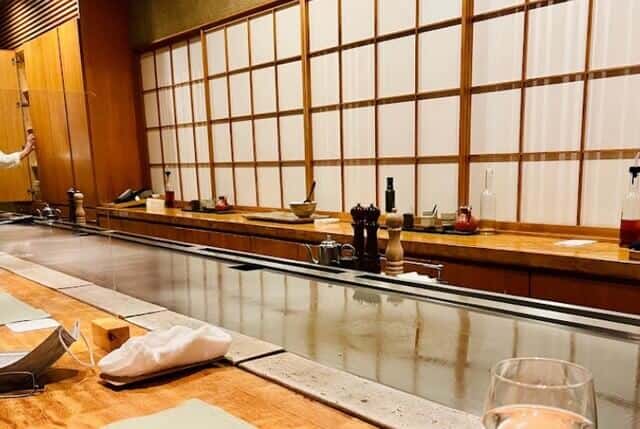-

How to Integrate Supplements into a Balanced Diet?
-



The Balanced Plate: Understanding the Japanese Diet and Magowayashii Philosophy
-



The Five Great Rice Meals of Japan
-



Savoring the Flavors of Summer: Exploring Japanese Cuisine
-



Probiotics in a Bottle: Japan’s Love of Lactic Acid Bacteria Beverages
-



Exploring the Phenomenon of Japanese Food Social Media Fame
Beyond the Grill: Japan’s Top Hibachi Restaurants 2024

People love dining out at hibachi restaurants because it is not just about the food. The talented chefs who work at these eateries put on exciting, entertaining shows that turn the meals into interactive, memorable experiences. Walking into one for the first time can seem confusing or even intimidating because the dining areas look different. The menus are often long and broken up into different sections, too. So figuring out how to order the first few times can be challenging.
The Japanese Grilling


The Japanese boast a rich tradition of grilling methods, each with its own unique characteristics and cultural significance. Teppanyaki involves chefs skillfully grilling ingredients on a flat iron griddle, often incorporating impressive knife skills and culinary flair into their presentations. Hibachi, on the other hand, features electric grills built into tables. It is where diners enjoy interactive dining experiences as chefs prepare a variety of meats, seafood, and vegetables right before their eyes. The Japanese also have their own style of grilling, called yakiniku, which serves as the Japanese equivalent of barbecue. Originating from Korean-style barbecue, yakiniku has evolved independently, incorporating various marinades and sauces to create distinctive flavors. Typically cooked over a charcoal flame on grills known as yakitori-ki.
What is Hibachi?


In Japan, hibachi isn’t just the name of the style of preparation. It is also the name of the heating device that the food is cooked over. Hibachi, which means “fire bowl” in Japanese, are small round, cylindrical, or square braziers designed to contain burning charcoal. Locals only use Hibachi in well-ventilated buildings because it causes carbon monoxide poisoning. Most Western homes aren’t properly ventilated for hibachi devices, which means that the small brazier can’t be used at home like they could in Japan.
Hibachi Restaurants
Hibachi restaurants gained popularity in the U.S. thanks to Benihana, inspired by traditional Japanese teppanyaki cooking spots with gas-heated hotplates on tables. Unlike their traditional counterparts, hibachi-style eateries use electric grills instead of propane tanks. These grills are versatile, cooking meat, poultry, seafood, as well as vegetables, eggs, and plenty of rice.
Typically, hibachi restaurants feature multiple grills, each surrounded by seating areas. Customers sit around three sides of the grill, with the chef at one end. The design prevents oil from dripping onto burner elements. This results in a fiery cooking display without smoke bothering patrons’ eyes or throats.
Guides on Hibachi Restaurants in Japan


The grill area at hibachi restaurants typically accommodates about 15 people, often resulting in shared seating arrangements. While leaving an empty seat between parties is acceptable when space allows, expect to get cozy with fellow diners otherwise. Despite the chance encounter with strangers, there’s usually a lively atmosphere of enjoyment and camaraderie around the table.
Once seated, the chef joins the group, servers introduce themselves, and orders are taken. The chef initiates the culinary spectacle with introductions and begins meal preparations. Orders for the entire table are typically consolidated unless additional guests join before cooking commences. Throughout the dining experience, hibachi-grilled dishes are served directly from the grill. While supplementary items like salads and soups are brought by servers. While prices for hibachi meals aren’t bargain basement, they’re generally more affordable than those at high-end steakhouses or seafood restaurants.
Hibachi vs Teppanyaki


Hibachi and teppanyaki are both styles of Japanese cuisine that involve cooking food on a flat iron grill, but they have distinct differences. The Hibachi cooking typically involves using electric small and portable grills built into tables. These grills are versatile and can cook a variety of ingredients, including meat, seafood, poultry, vegetables, eggs, and rice. Hibachi restaurants often feature multiple grills, each surrounded by seating areas where customers can watch the chef’s skilled culinary performance.
Teppanyaki, on the other hand, is a traditional Japanese cooking style where food is grilled on a large flat iron griddle, typically fixed in one place. Unlike hibachi grills, teppanyaki grills are usually not built into tables but are standalone units. Teppanyaki chefs cook meals right in front of diners, often incorporating impressive knife skills into their performances. Locals usually cook Teppanyaki with a small amount of oil and served with rice, while hibachi is with a large amount of oil and served with noodles.
While both hibachi and teppanyaki offer interactive dining experiences, they differ in their cooking methods, grill designs, and cultural origins.
Facts about Hibachi Restaurants’ Food


When you think of Hibachi food, what comes to mind? If you’re thinking about delicious, flavor-packed dishes that are cooked in front of your eyes, then you’re on the right track!
Hibachi food offers a delightful fusion of flavors that tantalize the taste buds. Whether you’re savoring a succulent steak and shrimp medley or indulging in the sweet tanginess of chicken teriyaki, there’s a dish to suit every palate. What makes the experience even more memorable is witnessing skilled chefs craft your meal right before your eyes, adding an exciting element of entertainment to your dining adventure.
Moreover, Hibachi cuisine is not just delicious; it’s also perfect for marking special occasions. Whether it’s a birthday celebration or a romantic date night, Hibachi restaurants provide an ideal setting for memorable gatherings. What’s more, the affordability of Hibachi dining makes it accessible to budget-conscious diners without compromising on quality or flavor. Plus, with its diverse menu offerings, including options for both meat lovers and vegetarians, there’s truly something for everyone to relish at a Hibachi restaurant.
What’s on the menu on Hibachi Restaurants?


Although every Hibachi restaurant has its own menu, there are common foods that can be seen in most of them. Under appetizers, you might find egg rolls, edamame, Japanese dumplings, and chicken wings. The menu might also offer sushi, sashimi, teriyaki entrées, noodle dishes, soups, salads, and desserts. These items are paired with fried rice and different grilled vegetables like onions, peppers, broccoli, and carrots. All of this tastes so delicious once it’s cooked because the chefs use copious amounts of butter, oil, or both. The most common kinds of flavor enhancers are soybean oil, garlic, sesame oil, soy sauce, mirin, and ginger dipping sauce.
Hibachi entrées typically come with soup and salad. A small miso soup is often served first that has a fermented soybean paste base. The soup might also contain vegetables, tofu, and seaweed. The salad is also pretty basic, often with lettuce, maybe a few other vegetables, and a thick, slightly tangy ginger dressing. And depending on the restaurant, there might also be desserts and a full bar.
Recommended Hitachi Restaurants in Japan
Teppanyaki Ginmeisui GINZA, renowned for its consecutive wins in the Teppanyaki category of the Ikkyu.com Restaurant Awards. It stands out in Ginza’s culinary scene. Its accolades speak to its commitment to excellence. Offering a diverse array of premium ingredients, from Suruga Bay seafood to local vegetables, the restaurant expertly grills them on the griddle, resulting in an explosion of flavors, aromas, and textures. It’s a sensory experience where the essence of each ingredient is concentrated to perfection.
Ginza Teppanyaki Kaika introduces a refreshing take on traditional teppanyaki, blending techniques from Italian, French, and Japanese cuisines. Unlike conventional teppanyaki, this restaurant offers a dynamic course menu featuring dishes like pasta and carpaccio, showcasing the culinary versatility beyond mere grilling. With a cozy counter and private room options, it caters to intimate gatherings or casual dining, ensuring a memorable dining experience for every occasion.
Hibiki Boeuf elevates teppanyaki with innovative lava stone grilling techniques, creating a unique fusion of tradition and modernity. Utilizing a new grill oven, the restaurant achieves exceptional flavors by pasteurizing steaks with hot lava stones, sealing in moisture and aroma while ensuring a perfect sear. With various seating options, including counter seats, main dining, and private rooms, it caters to diverse dining preferences, making it an ideal choice for special occasions or casual gatherings.
Takeaway


Hibachi restaurants in Japan offer not just a meal, but an immersive culinary experience steeped in tradition and skill. From the sizzling sounds of ingredients cooking on the grill to the theatrical flair of the chefs, dining at a Hibachi restaurant is a feast for the senses. The diverse menu, featuring a combination of savory grilled meats, fresh seafood, and flavorful vegetables, ensures there’s something for everyone to enjoy. Whether you’re celebrating a special occasion or simply indulging in a delicious meal, Hibachi dining promises unforgettable moments of camaraderie and culinary delight.
You can learn more about Japanese grilling cuisines and methods here! We recommend to try the dishes below!

















Comments